Sustainable Government Enterprise Architecture Framework
Abstract
1. Introduction
2. Materials and Methods
2.1. Fundamental Needed of Achievable in Information Technology Enablement
2.2. Enterprise Architecture and Enterprise Architecture Frameworks
2.3. Enterprise Ontology and Alignment of Business to Information Technology
2.4. Enterprise Architecture and Interoperability Framework for e-Government
2.5. An Adoption of e-Government
2.6. e-Government Proposed Architecture
2.7. Fundamental of Research Methodology
- Assessment. This step is to understand on availability of the frameworks (enterprise architecture framework or interoperability framework), co-relation of frameworks under multidisciplinary, origination of country specific frameworks, and its enforcement and the adoption capability of the e-government initiatives. Additionally, the review also seeks for some challenges or barriers that would impact the success of framework adoptable. Hence, the ultimate goal of this is to potentially find an opportunity of improvement in the framework context for more sustainable information technology landscape in terms of better cost control, better collaboration under the same standardization, and better resources consumption by sharable services.
- 2.
- Analysis. The step of analysis is to study on any availability survey results that link to the expectation of effective outcome of adapting enterprise architecture framework into national government and their agencies at the comprehensive and holistic viewpoint. Hence, the goal of this analysis is to identify the level of intensity of each survey expectation against the existing practicality enterprise architecture framework. The concentration analysis for this paper would be focused on ZFEA and TOGAF as per identifiable at the most referral for both the private and public sector. By doing this, the analysis result would expect to lead the opportunity of proposing the sustainable enterprise framework for government specifically for developing countries.
- 3.
- Design. The main activity of this step is to identify the theoretical baseline framework to be the design fundamental which the Supply-Chain Operations Reference (SCOR) will be used as the baseline structure of the design context of the sustainable government enterprise architecture framework. In principle, SCOR has declared the exercise steps to be four stages, which are Plan, Source, Make, and Deliver. Basically, this model would be able to apply as one of the best-in-class with practical management and having clarity in four levels of exercise method starting from identify broad definitions under the four stages of SCOR dimensions (Plan, Source, Make, and Deliver), identifying core process categories under those four stages, define the execution method of those core processes in detail, finally implementing those designs as shown in Figure 4 [44].
- 4.
- Validation. The validation exercise has proposed having two activities, which are (1) validating capability of the proposed framework same as validation criteria that exercise over ZEAF and TOGAF, which analysis findings has described in the Analysis step, and (2) conducting an interview session with a predefined list of questionnaires for field expertise to respond with their satisfaction level on the propose of sustainable government enterprise architecture framework.
- 5.
- Stress Testing. The testing step is planned to simulate the adaptation of sustainable government enterprise architecture framework by proposing the case study of Thailand for the proposed architecture landscape for one government agency that would be able to consolidate into the unified portal public services, which would be able to accommodate the definition of e-participation defining by the United Nations [46] and citizen centricity [34].
2.8. The Sustainable Government Enterprise Architecture Framework
2.8.1. Plan
Govern
Define
2.8.2. Source
Cooperate
Manage and Control
2.8.3. Make
Business Alignment
IT Alignment
2.8.4. Deliver
Change Management
IT Exercise
2.8.5. Evaluate
Quantitative
- Business Realization.
- ⚬
- Penetration rate of citizen cooperation,
- ⚬
- Government resources efficiency and productivity,
- ⚬
- Operation cost reduction,
- ⚬
- Improvement ratio of specific campaign like safety ratio.
- Information Technology.
- ⚬
- Total cost of ownership of Information Technology Investment,
- ⚬
- Service turnaround times,
- ⚬
- Accuracy rate improvement.
Qualitative
3. Discussion
3.1. Validating the Capability of Proposed Framework
3.2. Interview Responded and Discussions
- Business strategy and target capabilities of business has clearly proposed the cascading structure from national strategy down to departmental or agency strategy.
- Cross-organization collaboration will be the key driver of making the successfulness of target deliverable according to national strategy and target architecture cascading.
- The architecture governance would be substantially improved to centralized overlook in order to comprehensively acknowledge all initiatives and transformation execution.
- The fundamental legislation supporting comprehensively executed enterprise architecture proposed transformation roadmap has been emphasized at the plan process.
- Clearly define national data model using the citizen centricity approach. Each agency should be able to leverage sharable services over the citizen centric model.
- The proposed framework would be able to execute using an agile approach as there is no solid dependency of each process whereby the exercise would be partially executed according to partial readiness of each deliverable. More importantly, the core of the exercise over this framework is to ensure the strategy driver of national level must be explicitly defined and be able to further execute properly.
3.3. Framework Exercise for Thailand’s Land Transportation Case Study
3.3.1. The Findings of Strategic Actions
3.3.2. The Findings of Target Deliverables
- ▪
- Performing an improvement of operation processes suiting with new expected target capabilities.
- ▪
- Identifying key performances measurable in alignment with proposed process improvement.
- ▪
- Conducting an exercise designing architecture landscape covering on these domains; information systems (application and data), information technology infrastructure, security, and integration layer. The key success factor of this exercise is to identify the state of action on all components of each domain whereby the type of actions is comprised with new acquiring, decommissioning, upgrading, and replacing.
- ▪
- Conducting gap assessment exercise over the proposed architecture landscape of all domains.
- ▪
- Conducting the project executable roadmap and prioritization according to the proposed architecture landscape of each domain.
- ▪
- Conducting the detail design exercise of solution architecture.
- ▪
- Conducting the designing of change management execution plan.
- ▪
- Establishing the program management function for progressive monitoring and steered the strategic direction.
4. Conclusions
Author Contributions
Funding
Institutional Review Board Statement
Informed Consent Statement
Data Availability Statement
Conflicts of Interest
References
- Simon, D.; Fischbach, K.; Schoder, D. Enterprise architecture management and its role in corporate strategic management. Inf. Syst. E-Bus. Manag. 2014, 12, 5–42. [Google Scholar] [CrossRef]
- Hinkelmann, K.; Gerber, A.; Karagiannis, D.; Thoenssen, B.; van der Merwe, A.; Woitsch, R. A new paradigm for the continuous alignment of business and IT: Combining enterprise architecture modelling and enterprise ontology. Comput. Ind. 2016, 79, 77–86. [Google Scholar] [CrossRef]
- Janssen, M. Sociopolitical Aspects of Interoperability and Enterprise Architecture in E-Government. Soc. Sci. Comput. Rev. 2012, 30, 24–36. [Google Scholar] [CrossRef]
- Dang, D.D.; Pekkola, S. Systematic Literature Review on Enterprise Architecture in the Public Sector. Electron. J. e-Gov. 2017, 15, 130–154. [Google Scholar]
- Pardo, T.A.; Nam, T.; Burke, G.B. E-Government Interoperability: Interaction of Policy, Management, and Technology Dimensions. Soc. Sci. Comput. Rev. 2012, 30, 7–23. [Google Scholar] [CrossRef]
- Guijarro, L. Interoperability frameworks and enterprise architectures in e-government initiatives in Europe and the United States. Gov. Inf. Q. 2007, 24, 89–101. [Google Scholar] [CrossRef]
- Gill, A.Q.; Smith, S.; Beydoun, G.; Sugumaran, V. Agile enterprise architecture: A case of a cloud technology-enabled government enterprise transformation. In Proceedings of the 18th Pacific Asia Conference on Information Systems (PACIS 2014), Chengdu, China, 24–28 June 2014; Association for Information Systems AIS Electronic Library: Atlanta, GA, USA, 2014; pp. 1–11. [Google Scholar]
- Medini, K.; Bourey, J.P. SCOR-based enterprise architecture methodology. Int. J. Comput. Integr. Manuf. 2012, 25, 594–607. [Google Scholar] [CrossRef]
- Janssen, M.; Estevez, E. Lean government and platform-based governance—Doing more with less. Gov. Inf. Q. 2013, 30, 1–8. [Google Scholar] [CrossRef]
- The TOGAF Standard Version 9.2 Overview. Available online: https://www.opengroup.org/togaf-standard-version-92-overview (accessed on 20 February 2020).
- Zachman, J.A. The Zachman Framework for Enterprise Architecture; Zachman International: El Paso County, CO, USA, 2003. [Google Scholar]
- The Office of Management and Budget. Federal Enterprise Architecture Framework Version 2; The Office of Management and Budget: Washington, DC, USA, 2013. [Google Scholar]
- Eurostat. ESS EA Reference Framework; Eurostat, European Commission: Luxembourg, 2015. [Google Scholar]
- Digital Government Development Agency. EGA Enterprise Architecture; Digital Government Development Agency (Public Organization): Bangkok, Thailand, 2015. [Google Scholar]
- Lindström, A.; Johnson, P.; Johansson, E.; Ekstedt, M.; Simonsson, M. A survey on CIO concerns-do enterprise architecture frameworks support them? Inf. Syst. Front. 2006, 8, 81–90. [Google Scholar] [CrossRef]
- Zachman, J.A. A framework for information systems architecture. IBM Syst. J. 1987, 26, 276–292. [Google Scholar] [CrossRef]
- ISO/IEC/IEEE. ISO/IEC/IEEE 42020: Software, Systems and Enterprise—Architecture Processes; IEEE: Geneva, Switzerland, 2019. [Google Scholar]
- Bittler, R.S.; Kreizman, G. Gartner Enterprise Architecture Process: Evolution 2005. Gart. Res. 2005. Available online: https://www.gartner.com/en/documents/486246/gartner-enterprise-architecture-process-evolution-2005 (accessed on 15 February 2020).
- Fischer, R.; Aier, S.; Winter, R. A Federated Approach to Enterprise Architecture Model Maintenance. Enterp. Model. Inf. Syst. Archit. 2007, 2, 14–22. [Google Scholar]
- De Vries, M. A framework for understanding and comparing Enterprise Architecture models. Manag. Dyn. 2010, 19, 17–29. [Google Scholar]
- Cameron, B.H.; McMillan, E. Analyzing the Current Trends in Enterprise Architecture Frameworks. J. Enterp. Archit. 2013, 9, 60–71. [Google Scholar]
- O’Leary, D.E. Enterprise ontologies: Review and an activity theory approach. Int. J. Account. Inf. Syst. 2010, 11, 336–352. [Google Scholar] [CrossRef]
- Zhang, M.; Chen, H.; Luo, A. A Systematic Review of Business-IT Alignment Research with Enterprise Architecture. IEEE Access 2018, 6, 18933–18944. [Google Scholar] [CrossRef]
- Gerow, J.E.; Grover, V.; Thatcher, J.; Roth, P.L. Looking Toward the Future of IT–Business Strategic Alignment through the Past. MIS Q. 2014, 38, 1159–1186. [Google Scholar] [CrossRef]
- Charalabidis, Y.; Lampathaki, F.; Askounis, D.; Stassis, A. Shifting to Second Generation E-Government Interoperability Frameworks. In Proceedings of the International EGOV 2007 Conference, Regensburg, Germany, 3–7 September 2007. [Google Scholar]
- European Union. New European Interoperability Framework; Office of the European Union: Luxembourg, 2017. [Google Scholar]
- Charalabidis, Y.; Lampathaki, F.; Askounis, D. A Comparative Analysis of National Interoperability Frameworks. In Proceedings of the 15th Americas Conference on Information Systems 2009 (AMCIS 2009 Proceeding), San Francisco, CA, USA, 6–9 August 2009; Association for Information Systems AIS Electronic Library: Atlanta, GA, USA, 2009; pp. 1–11. [Google Scholar]
- Guijarro, L. Semantic interoperability in eGovernment initiatives. Comput. Stand. Interfaces 2009, 31, 174–180. [Google Scholar] [CrossRef][Green Version]
- Hjort-Madsen, K.; Gøtze, J. Enterprise Architecture in Government—Towards a Multi-Level Framework for Managing IT in Government. In Proceedings of the 4th European Conference on e-Government, Castle Dublin, Ireland, 14 June 2004; pp. 365–374. [Google Scholar]
- Ebrahim, Z.; Irani, Z. E-Government Adoption: Architecture and barriers. Bus. Process Manag. J. 2005, 11, 589–611. [Google Scholar] [CrossRef]
- Lam, W. Barriers to e-government integration. J. Enterp. Inf. Manag. 2005, 18, 511–530. [Google Scholar] [CrossRef]
- Scholl, H.J.; Klischewski, R. E-Government Integration and Interoperability: Framing the Research Agenda. Int. J. Public Adm. 2007, 30, 889–920. [Google Scholar] [CrossRef]
- Ojo, A.; Janowski, T.; Estevez, E. Improving Government Enterprise Architecture Practice—Maturity Factor Analysis. In Proceedings of the 2012 45th Hawaii International Conference on System Sciences, Maui, HI, USA, 4–7 January 2012; IEEE Computer Sociaty: Washington, DC, USA, 2012; pp. 4260–4269. [Google Scholar]
- Islam, P. Citizen-centric E-Government: The Next Frontier. Harv. Kennedy Sch. Rev. 2007, 7, 103–108. [Google Scholar]
- Charalabidis, Y.; Lampathaki, F.; Askounis, D. Unified Data Modelling and Document Standardization Using Core Components Technical Specification for Electronic Government Applications. J. Theor. Appl. Electron. Commer. Res. 2008, 3, 38–51. [Google Scholar] [CrossRef][Green Version]
- Lee, J.; Lee, H. Developing and validating a citizen-centric typology for smart city services. Gov. Inf. Q. 2014, 31, 93–105. [Google Scholar] [CrossRef]
- Lim, S.; Malek, J.A.; Hussain, M.Y.; Tahir, Z. Citizen participation in building citizen-centric smart cities. Malays. J. Soc. Space 2018, 14, 42–53. [Google Scholar] [CrossRef]
- UN. E-Government for the Future We Want, E-Government Survey 2014; Department of Economic and Social Affairs, United Nation: New York, NY, USA, 2014. [Google Scholar]
- Dawes, S.S. The Future of E-Government; Center for Technology in Government, State University of New York: Albany, NY, USA, 2002. [Google Scholar]
- Porwol, L.; Ojo, A.; Breslin, J.G. An ontology for next generation e-Participation initiatives. Gov. Inf. Q. 2016, 33, 583–594. [Google Scholar] [CrossRef]
- Al-Dalou, R.; Abu-Shanab, E. E-Participation Levels and Technologies. Available online: https://www.researchgate.net/publication/273632293_E-participation_levels_and_technologies (accessed on 23 February 2020).
- Conroy, M.M.; Evans-Cowley, J. E-participation in planning: An analysis of cities adopting on-line citizen participation tools. Environ. Plan. C Gov. Policy 2006, 24, 371–384. [Google Scholar] [CrossRef]
- Lapalme, J.; Gerber, A.; van der Merwe, A.; Zachman, J.; de Vries, M.; Hinkelmann, K. Exploring the future of enterprise architecture: A Zachman perspective. Comput. Ind. 2016, 79, 103–113. [Google Scholar] [CrossRef]
- Stewart, G. Supply-chain operations reference model (SCOR): The first cross-industry framework for integrated supply-chain management. Logist. Inf. Manag. 1997, 10, 62–67. [Google Scholar] [CrossRef]
- Cox, D.R.; Lewis, P.A.W. The Statistical Analysis of Series of Events; Chapman & Hal: London, UK, 1996. [Google Scholar]
- Blanc, D.L. E-Participation: A Quick Overview of Recent Qualitative Trends. Available online: https://www.un.org/development/desa/ (accessed on 15 March 2020).
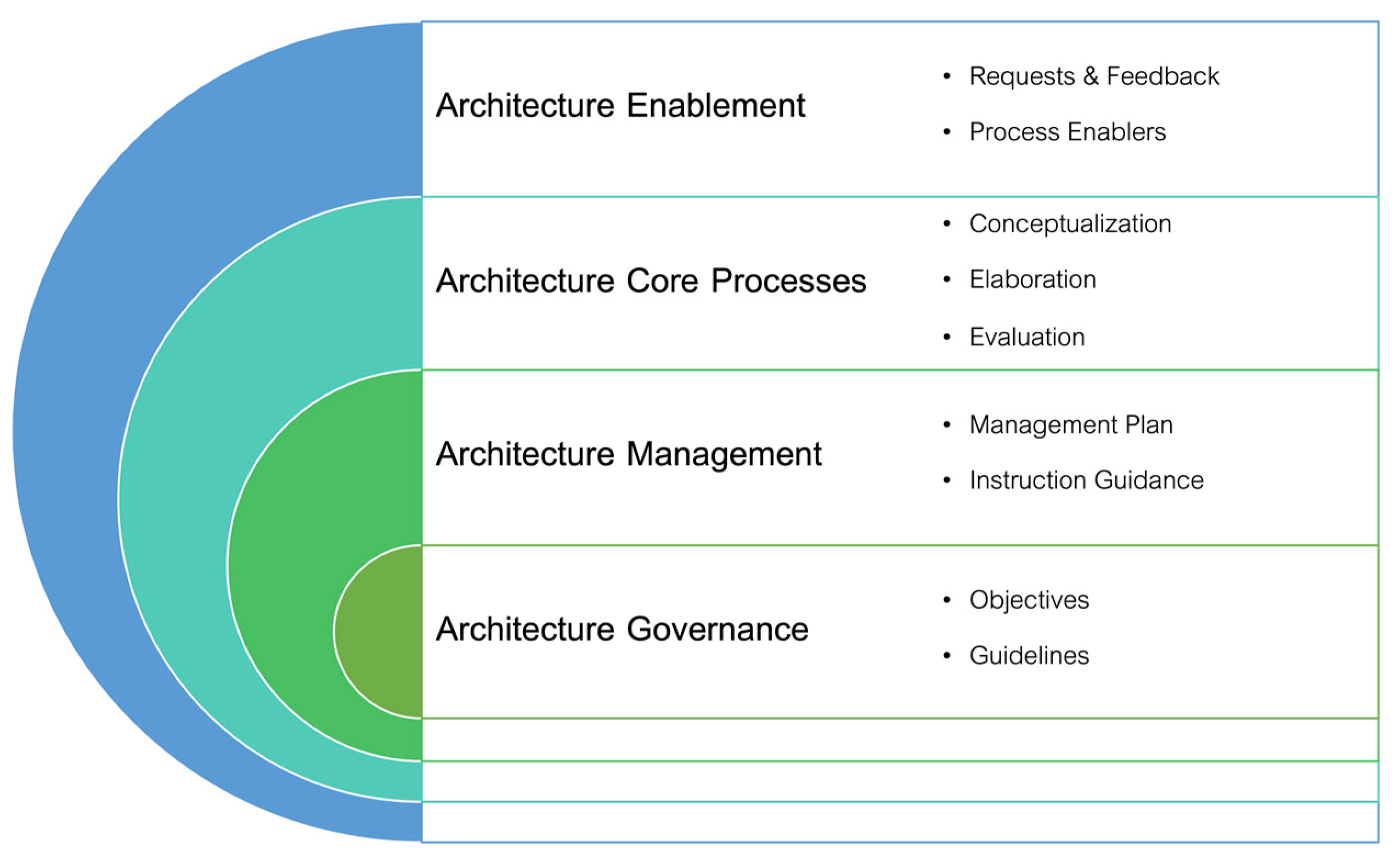

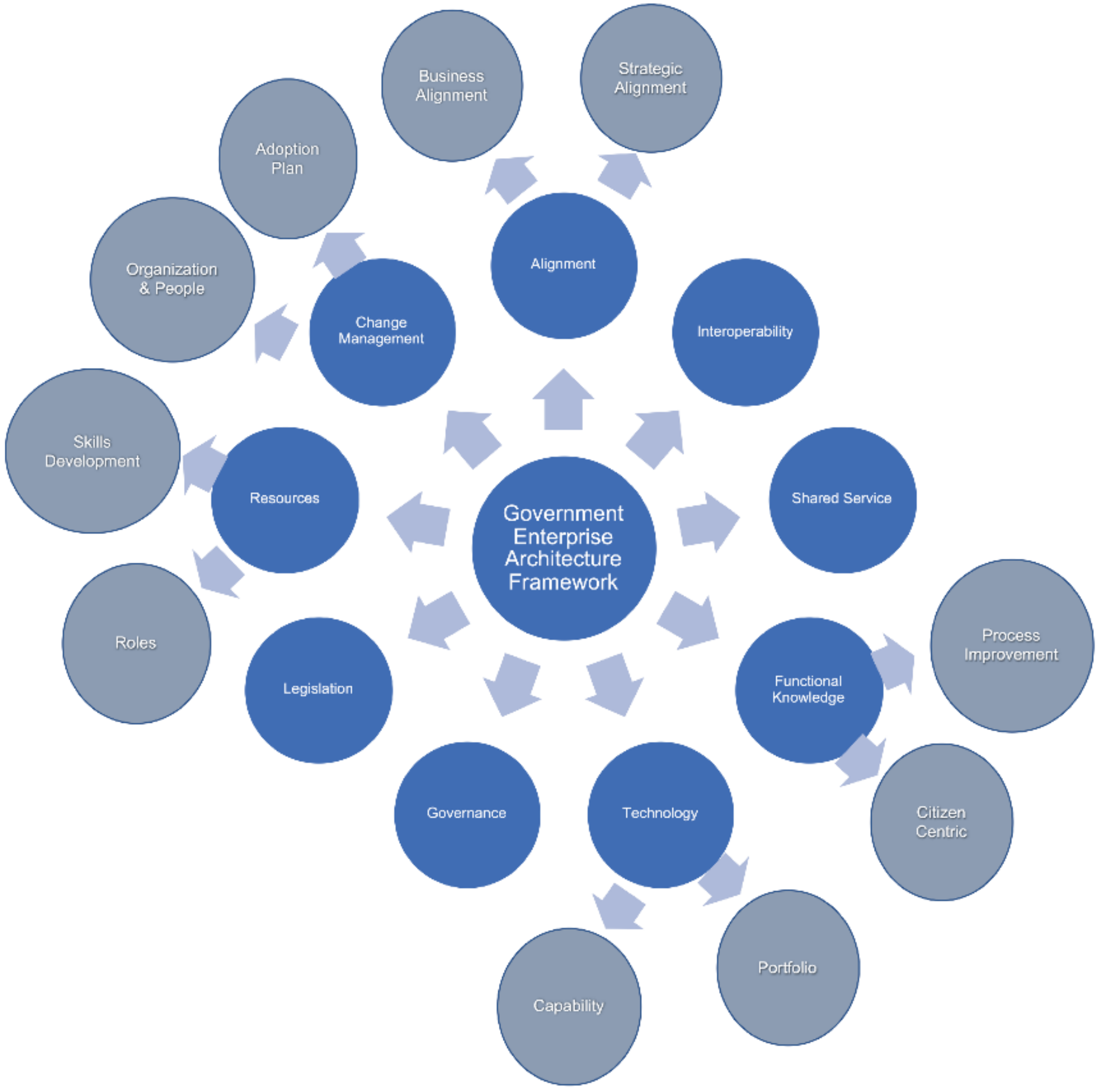
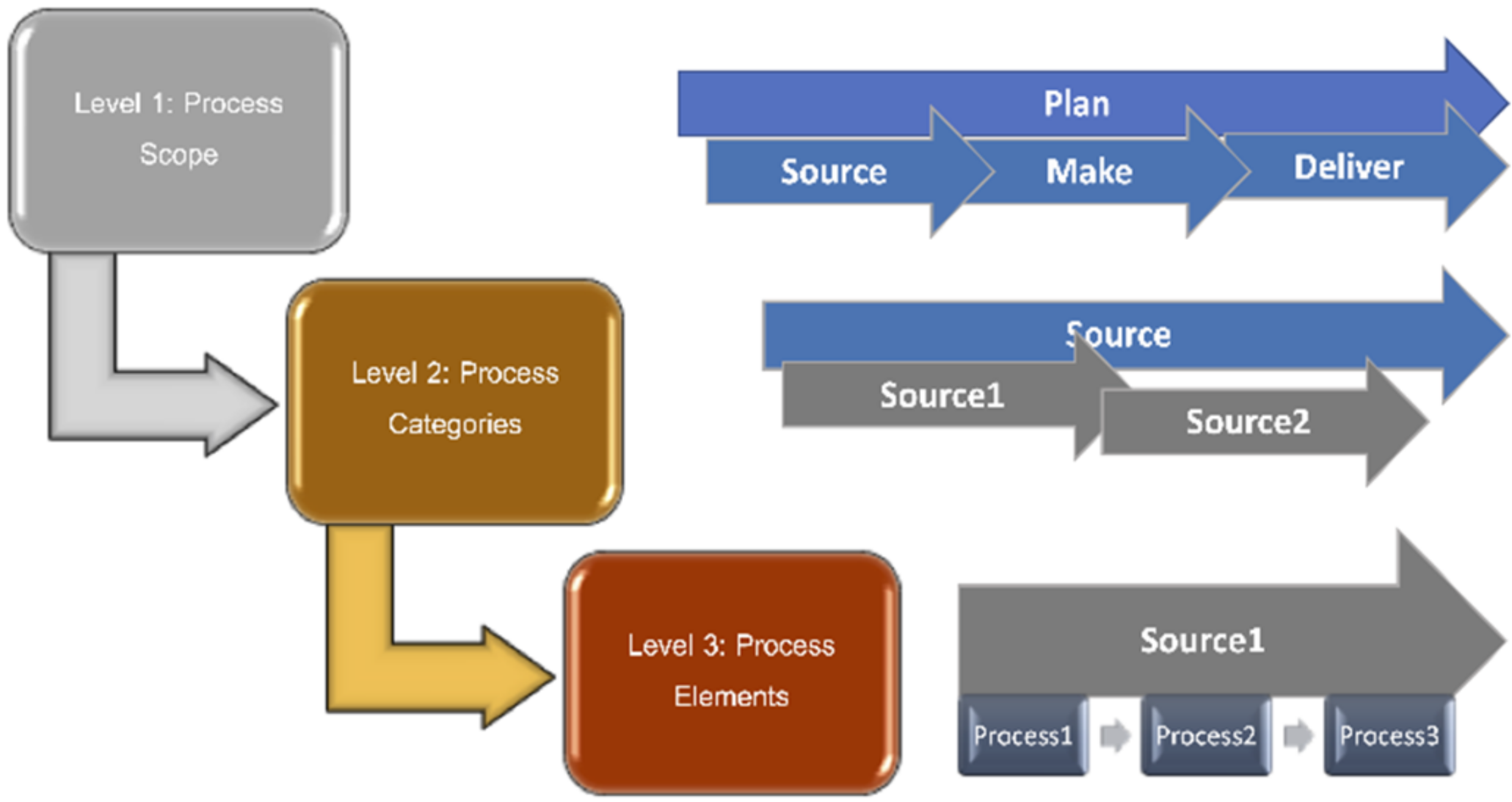

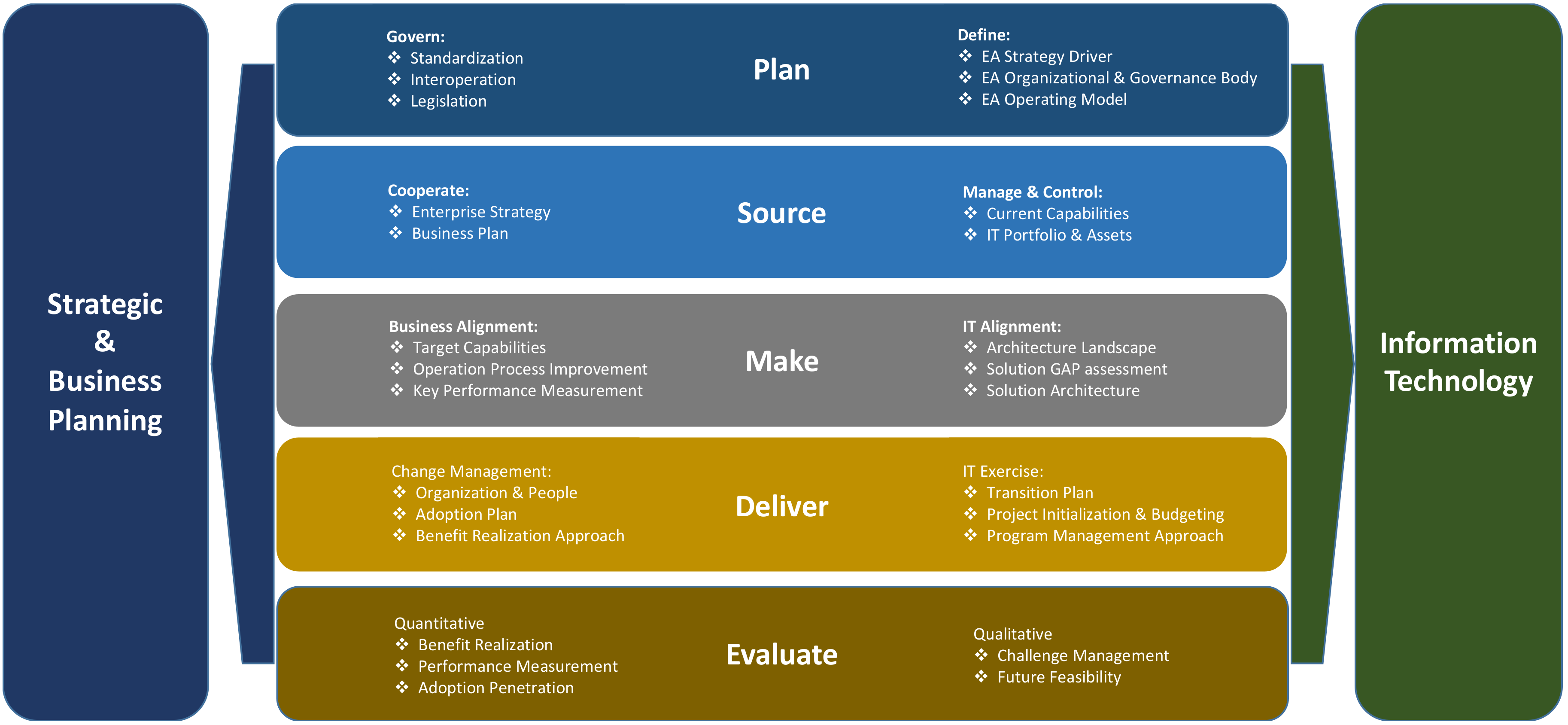
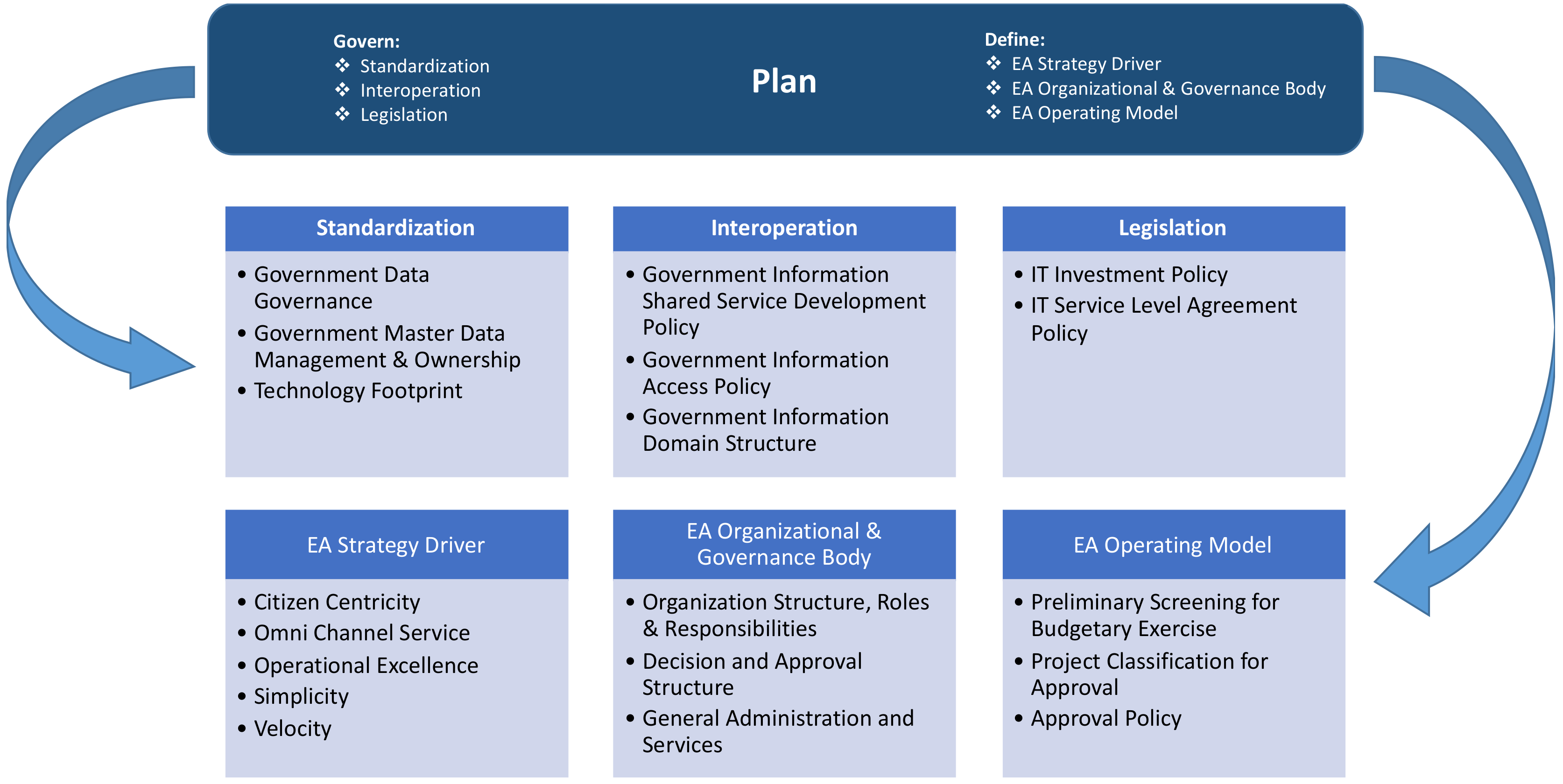
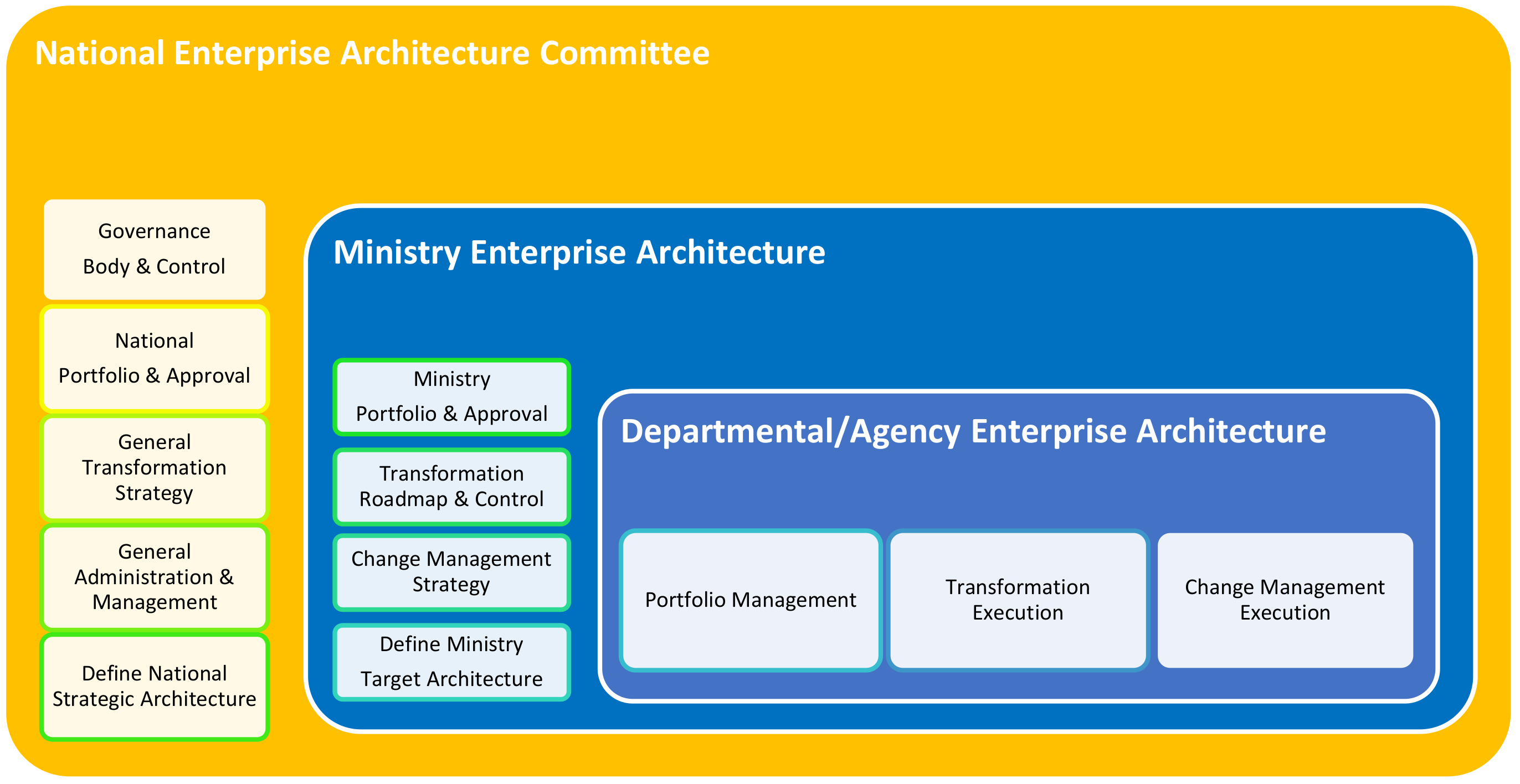
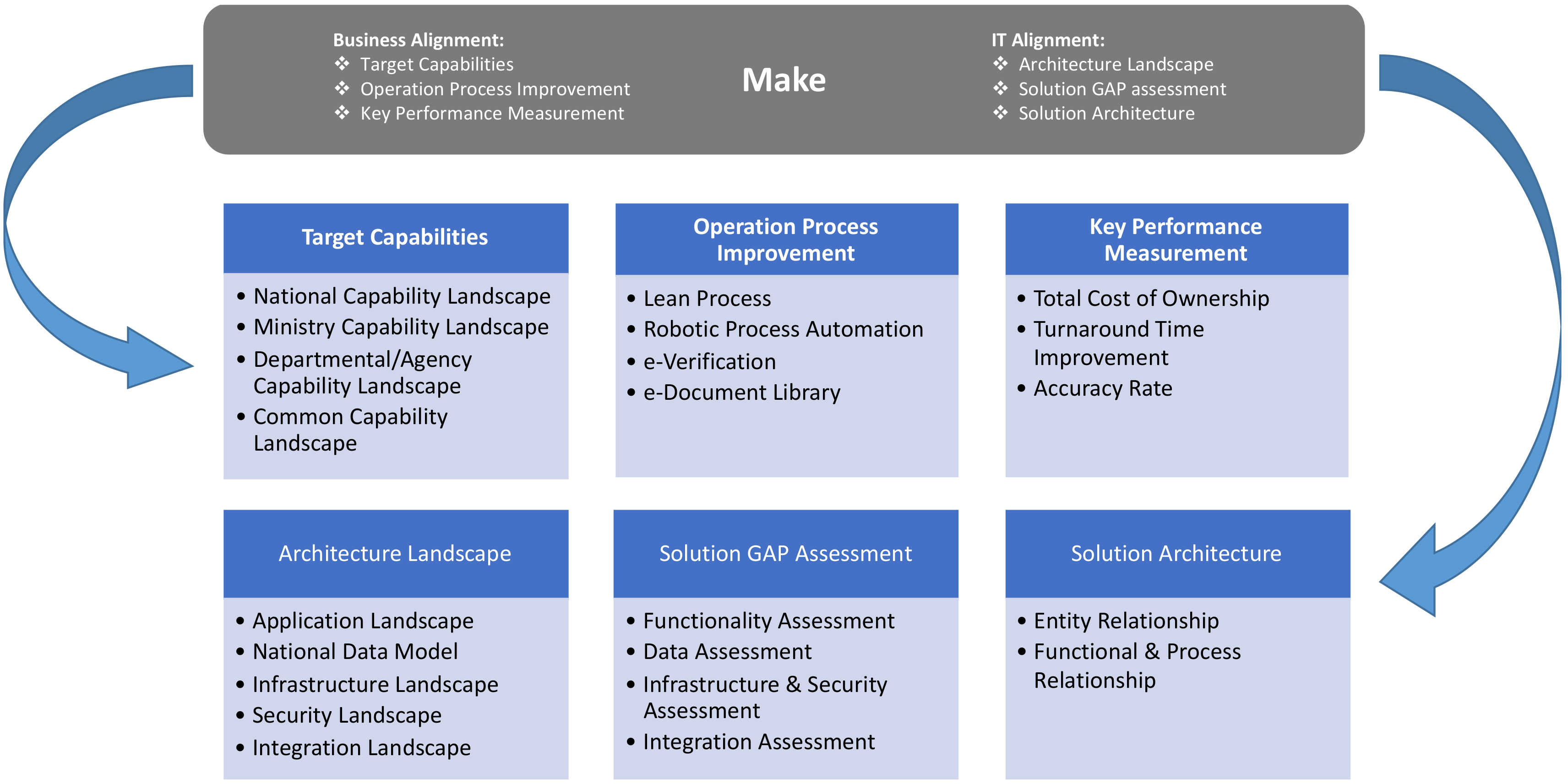

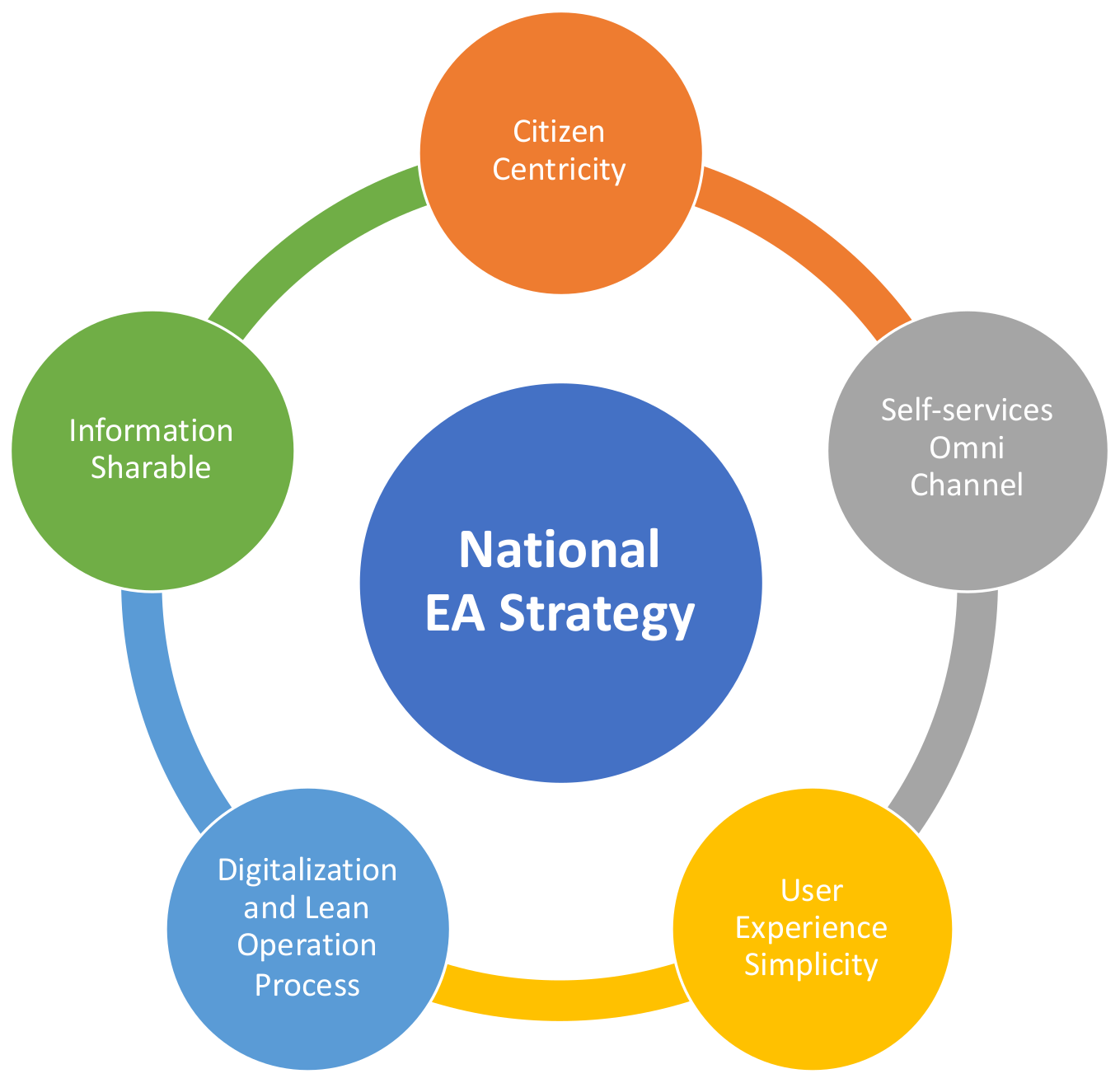
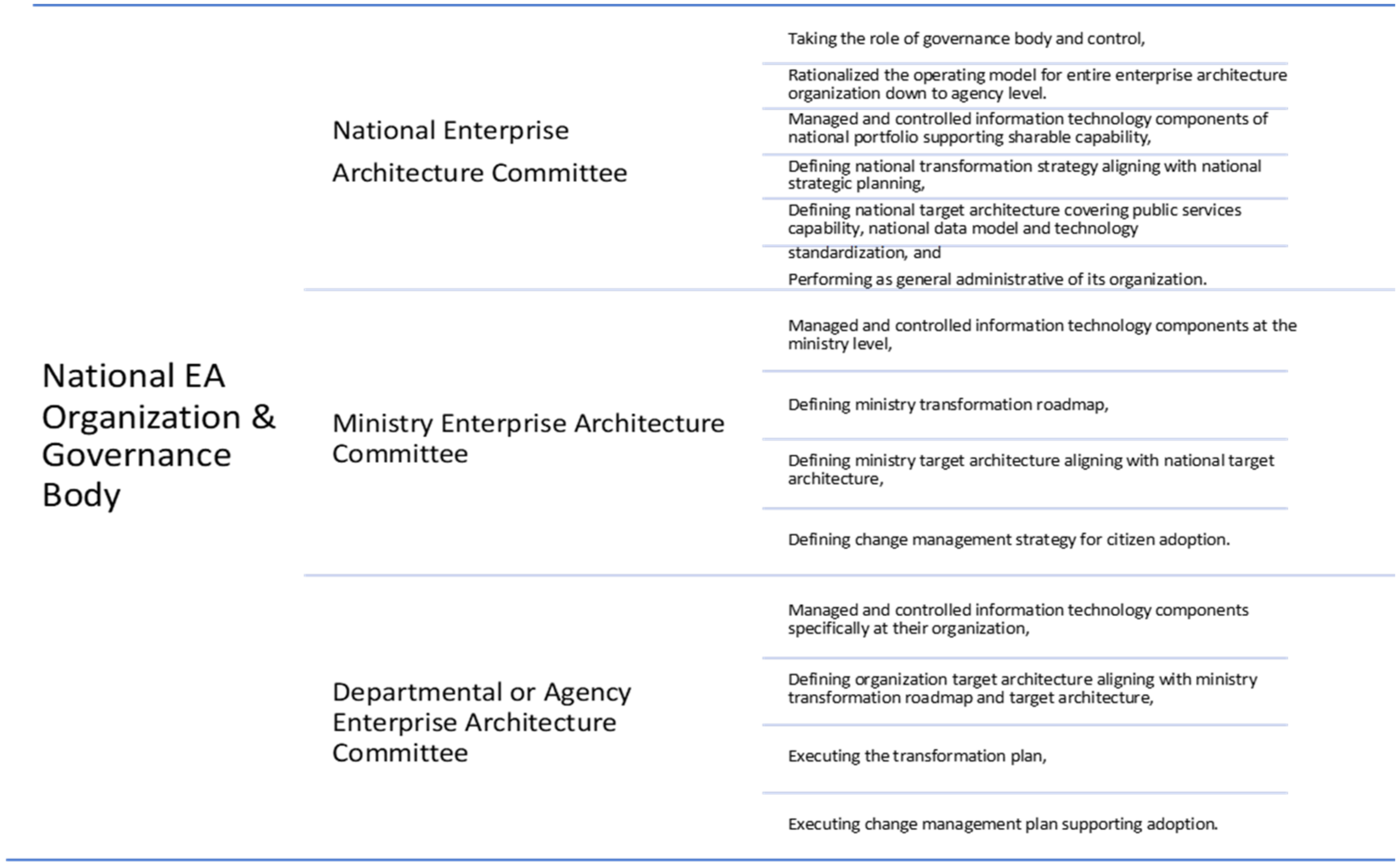
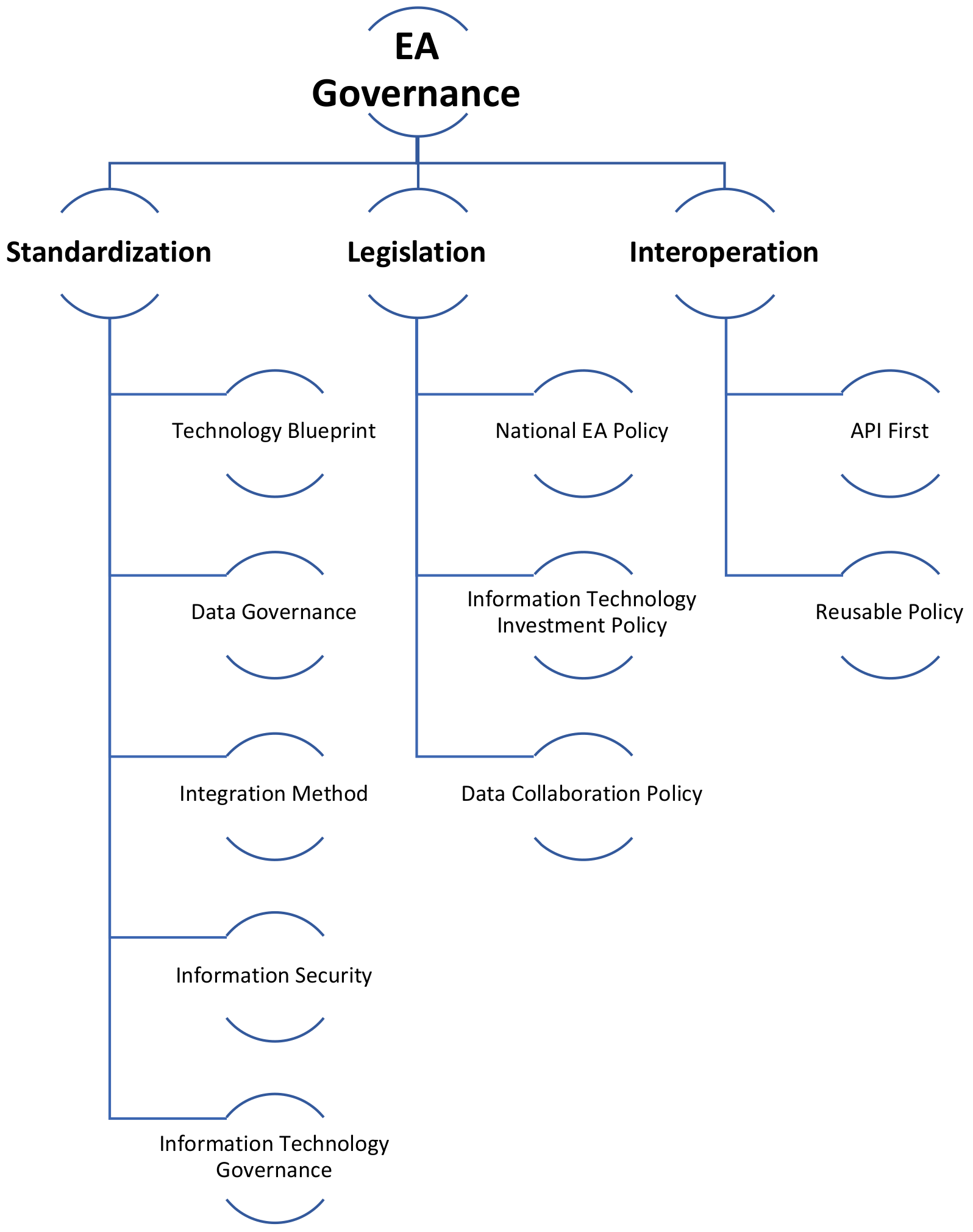

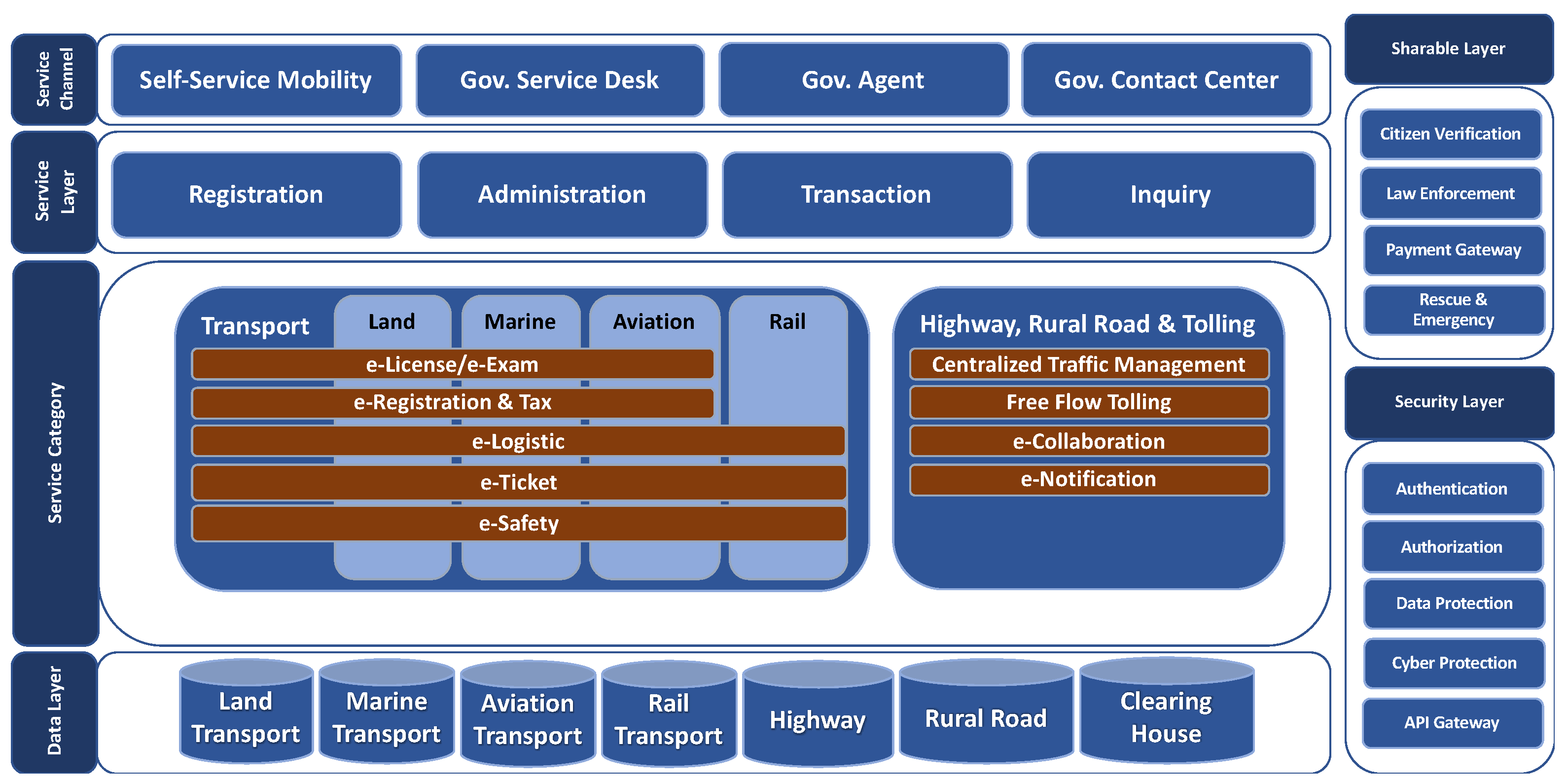
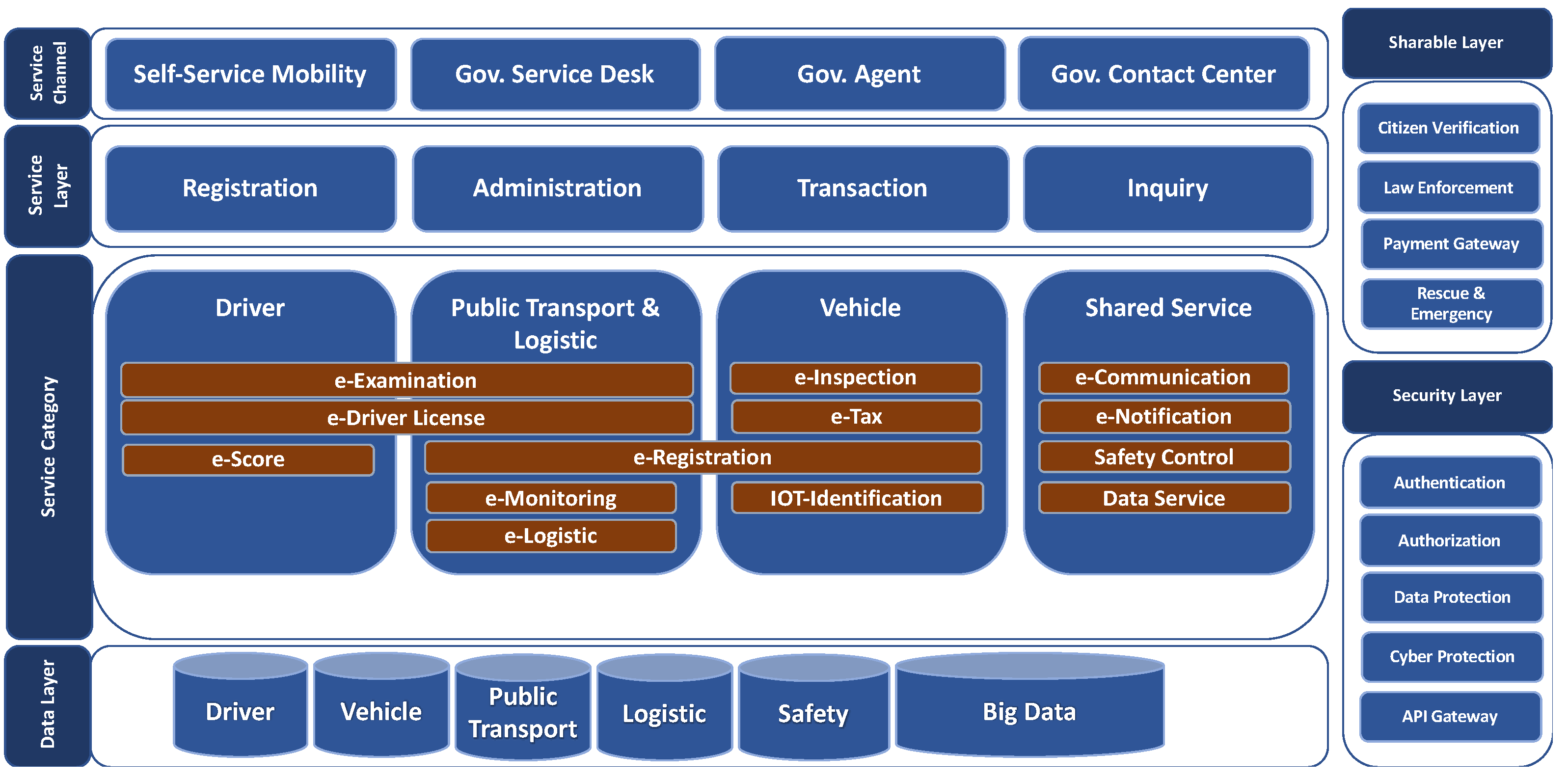
| Survey Ranking | Survey Result of CIO Expectation |
|---|---|
| 1 | Decrease the cost related to the business organization, such as cost for personnel in the business organization |
| 2 | Improve the quality of the interplay between the IT organization and the business organization, such as support, helpdesk, and end-user training |
| 3 | Provide new computer aided support to the business organization, such as new functionality, new information, and communication means |
| 4 | Improve the quality of the IT systems, such as security, performance, availability, reliability, quality of data, and correctness of functionality |
| 5 | Improve the quality of existing services or products that the business organization provides to the customer |
| 6 | Improve the quality of operation and maintenance, development, and acquisition of IT systems |
| 7 | Develop new services or products that the business organization provides to the customers |
| 8 | Improve the maintainability and modifiability, e.g., by improving interfaces, introducing middleware, and standardizing protocols and products |
| 9 | Decrease the costs related to hardware and software |
| 10 | Decrease the costs related to the IT organization, such as wages and training for IT staff |
| 11 | Provide new IT based solutions to the IT organization, such as administrative tools, b-logs, and backup tools |
| Factor Number | Factor Description |
|---|---|
| 1 | Management Commitment/Support and Involvement |
| 2 | Business Unit Participation/Alignment |
| 3 | Governance Structure and Compliance (Legislation) |
| 4 | Technical Skills and Development |
| 5 | Policies and Processes |
| 6 | External Support |
| 7 | Change Management |
| 8 | Functional Knowledge and Processes |
| 9 | Communication |
| 10 | Resources Availability and Organization |
| 11 | Clear Vision and Goal/Strategy |
| Review Topic | Objectives | Findings |
|---|---|---|
| Fundamental need of achievable in information technology improvement | To understand the key concentration requirement or expectation of information technology executive management have intended to achieve. Concentrate in the survey results of the relevant information technology executive management. | By the survey with information technology executive management, the key concentration of their expectation has identified to the efficiency of cost control, better collaboration with business and organization strategy, and improving the quality of service. |
| Enterprise Architecture and Enterprise Architecture Framework | To validate the principle of conceptualization of the enterprise architecture which are being standardized by ISO/IEC/IEEE. Review the deliverables of practical enterprise architecture frameworks like Zachman Framework for Enterprise Architecture (ZFEA), The Open Group Architecture Framework (TOGAF), Gartner Enterprise Architecture Framework (GEAF), and specific enterprise architecture frameworks likes Federal Enterprise Arhcitecture (FEA)which concentrated serving the public sector or suitable for national governments. | Basically, the practical enterprise architecture frameworks have proposed the framework in concentration within the core process as per described by Figure 1. The challenge would be the clarity guidance or governance and strategic direction of driving the framework, which the government would expect to clearly define. Additionally, the analysis finding by systematic literature review has shown that there are a limited number of researches paid attention on adaption of enterprise architecture framework and its challenges, especially on the group of developing countries. |
| Enterprise Ontology and Alignment of Business to Information Technology | To explore the means of enterprise ontology and the importance of alignment needed in between business and information technology in principle. Realize the meaning of linkage of those to enterprise architecture. | Theoretically, an enterprise ontology has described the entity, relationship of the entity, role, actor, and state with its activities and processes also incorporating the impact of organization, strategy, and marketing, which would be considered as mandated of successfulness enterprise architecture to collaborate with enterprise ontology. |
| Enterprise Architecture and Interoperability Framework for e-Government | To understand the key role of interoperability on enterprise architecture frameworks in order to enable the information sharing in between the inter-government agencies and public. | There are implemented clarity legislation of enterprise architecture framework by also incorporating the principal of interoperability into the framework specifically for developed countries. Developing countries have fragmented guidance of interoperability and enterprise architecture framework, which lead to challenges of sustainable information technology landscape. |
| An Adoption of e-Government | To seek the overall outcome of deployment of the e-Government by understanding the success factors and challenges facing. | Important to successful enabling the e-government initiative, standardization, policy, and governance must be taken into consideration for fundamentally mandated the architecture context. |
| e-Government Proposed Architecture | To understand on availability of e-government proposed architecture and implementation rationale in order to analyze the detail architecture, its advantages and benefits and challenges for identifying opportunity of improvement. | Key consideration of architecting the e-government is to concern on firstly the national data model, whereby all government agencies would be able to leverage, and secondly the concern on e-participation, whereby the conceptual of having full participation of citizens under the national strategy and plan. |
| Survey Expectation | As-is | Expected |
|---|---|---|
| Desired Goals | ||
| Interoperability | H | H |
| Client-Orientation | H | H |
| Enabling Reuse | M | H |
| Flexibility and Agility | M | H |
| Coherency | M | S |
| Aligning IT and Business | L | SH |
| Decision Making | L | SH |
| Enabling Transformation | L | SH |
| Desired Enterprise Architecture Products | ||
| Framework | H | H |
| Principals and Policies | H | H |
| Patterns | H | H |
| Tools | L | H |
| Basic Facilities | L | H |
| Shared Services | L | SH |
| Desired Governance | ||
| Decision Making Structure and Support | L | SH |
| Alignment Process ensuring Involvement | L | SH |
| Formal Communication to enable knowledge distribution | L | SH |
| Components Mentioned | Ojo et al. (2012) | Janssen (2012) | Dinh et al. (2017) | Cameron et al. (2013) | Vries, M. d. (2010) | Lapalme et al. (2016) | O’Leary (2010) | Hinkelmann et al. (2016) | Guijarro (2006) | Pardo et al. (2012) | Ebrahim et al. (2005) | Lam (2005) | Scholl et al. (2007) | Blanc (2020) | Porwol et al. (2016) | Islam (2007) |
|---|---|---|---|---|---|---|---|---|---|---|---|---|---|---|---|---|
| Management Support & Involvement | x | x | x | x | x | x | x | |||||||||
| Business Participation (Business Alignment) | x | x | x | x | x | x | x | x | x | x | ||||||
| Governance Structure | x | x | x | x | x | x | x | x | x | x | ||||||
| Legislation (Compliance) | x | x | x | x | x | x | x | x | x | |||||||
| Skills Development | x | x | x | |||||||||||||
| EA Policies & Processes | x | x | x | x | x | x | ||||||||||
| External Support (Consultant) | x | x | ||||||||||||||
| Change Management | x | x | x | x | x | x | x | |||||||||
| Functional Knowledge & Processes | x | x | x | x | x | x | x | x | ||||||||
| Communication & Adoption | x | x | ||||||||||||||
| Resources (Organization & Roles) | x | x | x | x | x | x | x | x | x | |||||||
| Clear Vision & Goal (Strategic Alignment) | x | x | x | x | x | x | x | x | x | |||||||
| Marketing | x | x | ||||||||||||||
| Funding | x | x | ||||||||||||||
| Interoperability | x | x | x | x | x | x | x | x | x | x | x | x | ||||
| Sharable Services & Collaboration | x | x | x | x | x | x | x | x | ||||||||
| Standard | x | x | x | x | x | x | x | x | ||||||||
| Taxonomy | x | |||||||||||||||
| Reference Model | x | x | x | |||||||||||||
| Integration | x | x | x | x | x | |||||||||||
| Government Data Catalog | x | x | x | x | x | x | x | |||||||||
| Citizen Centric Data Model | x | x | x | |||||||||||||
| Technology & Security | x | x | x | x | x | x | ||||||||||
| e-Participation | x | x |
| Key Validation Topics | % Weight | ZFEA | TOGAF | ||
|---|---|---|---|---|---|
| Existing Score | Weight Score | Existing Score | Weight Score | ||
| 1. Alignment IT and Business/Participation in Business Exercise | 10 | 0.5 | 5 | 0.5 | 5 |
| 2. Decision Making/Legislation Impact and Support | 10 | 0 | 0 | 0 | 0 |
| 3. Enabling Transformation/National Transformation Cascading/Top-Down Architecture | 15 | 0.5 | 7.5 | 0.5 | 7.5 |
| 4. Promoting Shared Services Capability | 10 | 0 | 0 | 0 | 0 |
| 5. Emphasis in Architecture Exercise Governance | 5 | 0 | 0 | 0.5 | 2.5 |
| 6. Emphasis in Interoperability | 5 | 0.5 | 2.5 | 1 | 5 |
| 7. Emphasis in Operational Process Improvement during the Architecture Exercise | 10 | 0.5 | 5 | 1 | 10 |
| 8. Emphasis in Analysis of Gap, Impact, and Dependency during the Architecture Exercise | 5 | 1 | 5 | 1 | 5 |
| 9. Emphasis in Information Policy | 15 | 1 | 15 | 1 | 15 |
| 10. Emphasis in Cross-Organization Collaboration | 15 | 0 | 0 | 0 | 0 |
| Total Scores | 100 | 40.0 | 50.0 | ||
| Key Validation Topics | % Weight | ZFEA | TOGAF | Sustainable Government Enterprise Architecture Framework | |||
|---|---|---|---|---|---|---|---|
| Capability Score | Weight Score | Capability Score | Weight Score | Capability Score | Weight Score | ||
| 1. Alignment IT and Business/Participation in Business Exercise | 10 | 0.5 | 5 | 0.5 | 5 | 1 | 10 |
| 2. Decision Making/Legislation Impact and Support | 10 | 0 | 0 | 0 | 0 | 1 | 10 |
| 3. Enabling Transformation/National Transformation Cascading/Top-Down Architecture | 15 | 0.5 | 7.5 | 0.5 | 7.5 | 1 | 15 |
| 4. Promoting Shared Services Capability | 10 | 0 | 0 | 0 | 0 | 1 | 10 |
| 5. Emphasis in Architecture Exercise Governance | 5 | 0 | 0 | 0.5 | 2.5 | 1 | 5 |
| 6. Emphasis in Interoperability | 5 | 0.5 | 2.5 | 1 | 5 | 1 | 5 |
| 7. Emphasis in Operational Process Improvement during the Architecture Exercise | 10 | 0.5 | 5 | 1 | 10 | 1 | 10 |
| 8. Emphasis in Analysis of Gap, Impact, and Dependency during the Architecture Exercise | 5 | 1 | 5 | 1 | 5 | 1 | 5 |
| 9. Emphasis in Information Policy | 15 | 1 | 15 | 1 | 15 | 1 | 15 |
| 10. Emphasis in Cross-Organization Collaboration | 15 | 0 | 0 | 0 | 0 | 1 | 15 |
| Total Scores | 100 | 40.0 | 50.0 | 100.0 | |||
Publisher’s Note: MDPI stays neutral with regard to jurisdictional claims in published maps and institutional affiliations. |
© 2021 by the authors. Licensee MDPI, Basel, Switzerland. This article is an open access article distributed under the terms and conditions of the Creative Commons Attribution (CC BY) license (http://creativecommons.org/licenses/by/4.0/).
Share and Cite
Thirasakthana, M.; Kiattisin, S. Sustainable Government Enterprise Architecture Framework. Sustainability 2021, 13, 879. https://doi.org/10.3390/su13020879
Thirasakthana M, Kiattisin S. Sustainable Government Enterprise Architecture Framework. Sustainability. 2021; 13(2):879. https://doi.org/10.3390/su13020879
Chicago/Turabian StyleThirasakthana, Montree, and Supaporn Kiattisin. 2021. "Sustainable Government Enterprise Architecture Framework" Sustainability 13, no. 2: 879. https://doi.org/10.3390/su13020879
APA StyleThirasakthana, M., & Kiattisin, S. (2021). Sustainable Government Enterprise Architecture Framework. Sustainability, 13(2), 879. https://doi.org/10.3390/su13020879






